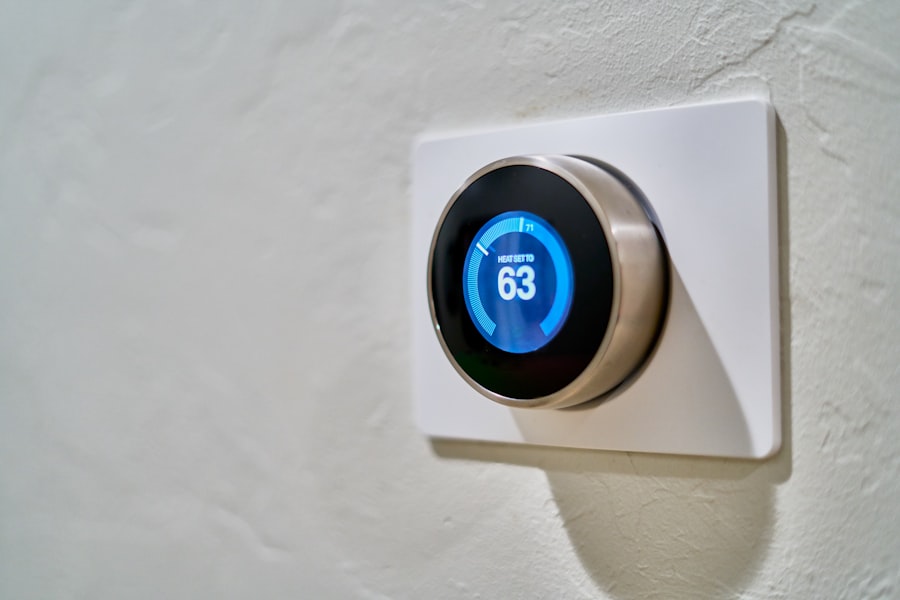The convergence of blockchain technology and the Internet of Things (IoT) represents a significant evolution in how devices communicate and transact with one another. Blockchain, a decentralized ledger technology, allows for secure, transparent, and tamper-proof record-keeping, while IoT encompasses a vast network of interconnected devices that collect and exchange data. Together, these technologies create a robust framework that enhances the capabilities of IoT systems by providing a secure method for devices to interact without the need for a central authority.
This integration not only facilitates real-time data sharing but also ensures that the data exchanged is trustworthy and verifiable, which is crucial in an era where data breaches and cyber threats are rampant. As IoT devices proliferate across various sectors—from smart homes to industrial applications—the need for a reliable and secure method of managing the vast amounts of data generated becomes increasingly critical. Traditional centralized systems often struggle to keep pace with the scale and complexity of IoT networks, leading to vulnerabilities that can be exploited by malicious actors.
Blockchain addresses these concerns by enabling peer-to-peer interactions among devices, thereby reducing the risk of single points of failure. Furthermore, the immutable nature of blockchain records ensures that any data logged is permanent and cannot be altered retroactively, fostering trust among users and devices alike. This foundational understanding of both blockchain and IoT sets the stage for exploring their integration and the transformative potential it holds.
Key Takeaways
- Blockchain is a decentralized, distributed ledger technology that provides a secure and transparent way to record transactions.
- IoT refers to the network of physical devices embedded with sensors, software, and other technologies for the purpose of connecting and exchanging data.
- Integrating blockchain with IoT can enhance security, transparency, and efficiency in data exchange and transactions.
- Challenges of integrating blockchain with IoT include scalability, interoperability, and the high energy consumption of blockchain networks.
- Real-world applications of blockchain and IoT include supply chain management, smart contracts, and asset tracking.
The Benefits of Integrating Blockchain with IoT
Revolutionizing Industries with Blockchain and IoT
The integration of blockchain with the Internet of Things (IoT) offers numerous benefits that can revolutionize various industries by enhancing efficiency, security, and transparency. One of the most significant advantages is the ability to automate processes through smart contracts—self-executing contracts with the terms of the agreement directly written into code. In an IoT context, smart contracts can facilitate automated transactions between devices without human intervention, streamlining operations in sectors such as supply chain management, healthcare, and energy distribution.
Streamlining Operations with Smart Contracts and IoT Sensors
For instance, in a smart supply chain, IoT sensors can monitor inventory levels in real-time, triggering automatic reorders when stock falls below a certain threshold. This not only reduces human error but also optimizes resource allocation and minimizes waste. Moreover, the decentralized nature of blockchain enhances data integrity and security within IoT ecosystems. Each device can independently verify transactions and data exchanges through consensus mechanisms, ensuring that only legitimate interactions occur.
Enhancing Data Security and Compliance
This is particularly crucial in environments where sensitive data is transmitted, such as in healthcare or financial services. By leveraging blockchain’s cryptographic features, organizations can protect against unauthorized access and tampering, thereby safeguarding user privacy and maintaining compliance with regulations such as the General Data Protection Regulation (GDPR). The decentralized nature of blockchain ensures that data is secure, transparent, and tamper-proof.
Paving the Way for Innovative Business Models
The combination of blockchain and IoT technologies not only fosters trust among stakeholders but also paves the way for innovative business models that capitalize on real-time data insights. By leveraging the power of blockchain and IoT, organizations can unlock new revenue streams, improve operational efficiency, and create new opportunities for growth and innovation.
Challenges and Limitations of Blockchain and IoT Integration

Despite the promising benefits of integrating blockchain with IoT, several challenges and limitations must be addressed to realize its full potential. One significant hurdle is scalability; as the number of connected devices continues to grow exponentially, the blockchain networks must be capable of handling vast amounts of data and transactions without compromising performance. Current blockchain solutions often face limitations in transaction throughput and latency, which can hinder their effectiveness in real-time applications.
For instance, if an IoT network generates thousands of transactions per second, a blockchain that cannot process these transactions quickly enough may lead to bottlenecks, undermining the efficiency gains that integration aims to achieve. Another critical challenge lies in interoperability among different blockchain platforms and IoT devices. The landscape is currently fragmented, with various protocols and standards in use across industries.
This lack of uniformity can create barriers to seamless communication between devices operating on different systems. Additionally, integrating legacy systems with new blockchain solutions poses its own set of difficulties, as organizations must navigate compatibility issues while ensuring that existing infrastructure remains functional. Addressing these challenges requires collaborative efforts among industry stakeholders to establish common standards and frameworks that facilitate interoperability while also enhancing scalability.
Real-world Applications of Blockchain and IoT
The real-world applications of integrating blockchain with IoT are diverse and span multiple sectors, showcasing the transformative potential of this synergy. In agriculture, for example, farmers can utilize IoT sensors to monitor soil conditions, crop health, and weather patterns in real-time. By integrating this data with blockchain technology, they can create transparent supply chains that track produce from farm to table.
This not only enhances food safety by providing verifiable records of agricultural practices but also empowers consumers with information about the origins of their food. Such transparency can lead to increased consumer trust and potentially higher market prices for sustainably produced goods. In the realm of smart cities, the integration of blockchain and IoT can significantly improve urban management and resource allocation.
Smart meters equipped with IoT technology can monitor energy consumption patterns across neighborhoods, while blockchain can facilitate secure transactions for energy trading among residents. This decentralized energy marketplace allows individuals to buy and sell excess energy generated from renewable sources like solar panels directly to their neighbors. Such innovations not only promote sustainability but also empower communities by giving them control over their energy resources.
As cities continue to evolve into smart ecosystems, the combination of blockchain and IoT will play a pivotal role in enhancing urban living through improved efficiency and sustainability.
Security and Privacy Considerations in Blockchain and IoT Integration
As with any technological advancement, security and privacy considerations are paramount when integrating blockchain with IoT systems. While blockchain offers enhanced security features through decentralization and cryptography, it is not immune to vulnerabilities. For instance, if an IoT device is compromised, it could potentially manipulate the data being recorded on the blockchain or disrupt the entire network’s operations.
Therefore, ensuring that each device within an IoT ecosystem is secure from cyber threats is crucial for maintaining the integrity of the entire system. Organizations must implement robust security protocols at both the device level and within the blockchain infrastructure to mitigate these risks effectively. Privacy concerns also arise when integrating these technologies, particularly regarding data ownership and consent.
As IoT devices collect vast amounts of personal information—from health metrics to location data—ensuring that users retain control over their data becomes increasingly important. Blockchain’s inherent transparency can conflict with privacy needs if not managed properly; thus, organizations must strike a balance between transparency and confidentiality. Solutions such as zero-knowledge proofs or private blockchains can help address these concerns by allowing data verification without revealing sensitive information.
Ultimately, addressing security and privacy considerations will be essential for fostering user trust and encouraging widespread adoption of integrated blockchain-IoT solutions.
The Future of Blockchain and IoT

Overcoming Challenges through Emerging Technologies
Emerging technologies like edge computing may play a crucial role in this evolution by enabling data processing closer to where it is generated, reducing latency and bandwidth usage while enhancing real-time decision-making capabilities. This shift could further enhance the efficiency of IoT systems while complementing blockchain’s capabilities.
Evolution of Regulatory Frameworks
Regulatory frameworks will likely evolve alongside these technologies to address emerging challenges related to security, privacy, and data ownership. Policymakers will need to collaborate with industry leaders to create guidelines that foster innovation while protecting consumers’ rights.
Towards Decentralized Business Models
As organizations increasingly adopt integrated solutions for their operations, we may witness a shift towards decentralized business models that empower individuals rather than relying solely on centralized authorities. This transformation could redefine traditional industries by promoting transparency, accountability, and sustainability—ultimately leading us toward a more interconnected and efficient future.
Key Players and Innovations in the Intersection of Blockchain and IoT
The intersection of blockchain technology and IoT has attracted numerous key players who are driving innovation in this space. Major tech companies such as IBM have been at the forefront of developing solutions that leverage both technologies for various applications. IBM’s Watson IoT platform integrates blockchain capabilities to enhance supply chain transparency and improve asset tracking across industries.
Similarly, companies like Microsoft are exploring how their Azure cloud services can support blockchain-based IoT applications, enabling businesses to harness real-time data insights securely. Startups are also making significant strides in this domain by introducing novel solutions that address specific challenges associated with integrating blockchain with IoT. For instance, IOTA has developed a unique distributed ledger technology designed specifically for IoT environments, allowing devices to transact without incurring fees while ensuring scalability.
Other innovative projects focus on creating decentralized marketplaces for IoT data sharing or developing secure communication protocols for connected devices using blockchain technology. As these key players continue to innovate at the intersection of blockchain and IoT, we can expect transformative advancements that will reshape industries and redefine how we interact with technology in our daily lives.
In exploring the convergence of cutting-edge technologies, it’s crucial to understand how blockchain can enhance the security and efficiency of the Internet of Things (IoT). A related article that delves into another innovative technology is available at How One Founder Realized the Potential of Sustainable Energy. This piece highlights the journey of a founder who tapped into the possibilities of sustainable energy, showcasing how emerging technologies can drive significant changes in various industries, much like the integration of blockchain with IoT promises to revolutionize data integrity and device management in connected systems.
FAQs
What is Blockchain?
Blockchain is a decentralized, distributed ledger technology that records transactions across multiple computers in such a way that the recorded transactions cannot be altered retroactively.
What is the Internet of Things (IoT)?
The Internet of Things (IoT) refers to the network of physical devices, vehicles, home appliances, and other items embedded with electronics, software, sensors, actuators, and connectivity which enables these things to connect and exchange data.
How do Blockchain and IoT intersect?
Blockchain and IoT intersect in various ways, such as providing a secure and transparent way to record and verify the data generated by IoT devices, enabling secure and tamper-proof communication and transactions between IoT devices, and facilitating the development of new business models and applications for IoT.
What are the benefits of integrating Blockchain with IoT?
Integrating Blockchain with IoT can provide benefits such as enhanced security and privacy for IoT devices and data, improved transparency and trust in IoT data and transactions, and the ability to create new decentralized IoT applications and services.
What are some use cases for the intersection of Blockchain and IoT?
Some use cases for the intersection of Blockchain and IoT include supply chain management, smart contracts for IoT devices, secure and transparent data sharing between IoT devices, and decentralized IoT marketplaces.
What are the challenges of integrating Blockchain with IoT?
Challenges of integrating Blockchain with IoT include scalability issues, high energy consumption for Blockchain transactions, interoperability between different Blockchain and IoT platforms, and the need for robust security measures to protect IoT devices and data.

